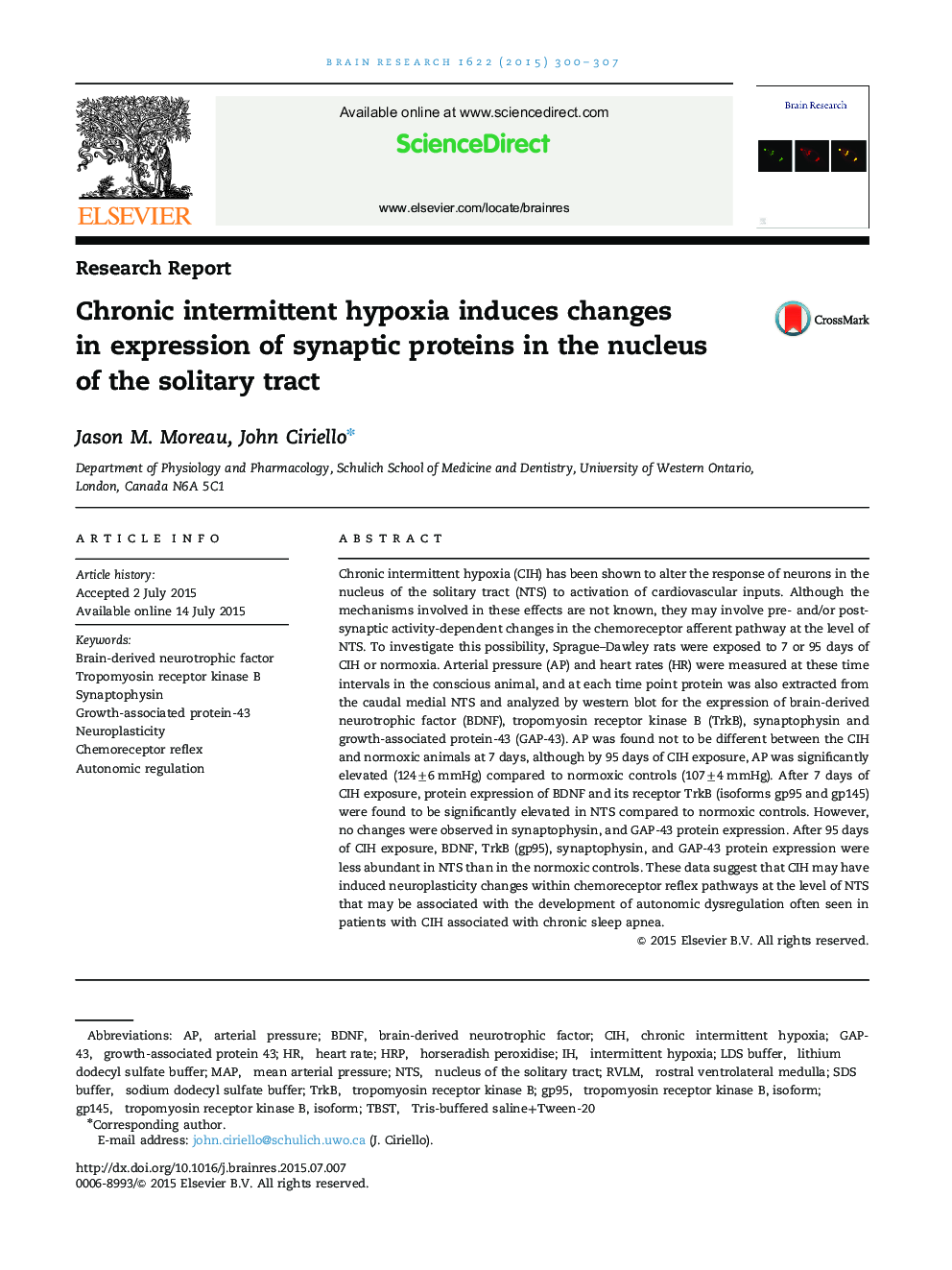| کد مقاله | کد نشریه | سال انتشار | مقاله انگلیسی | نسخه تمام متن |
|---|---|---|---|---|
| 6262940 | 1613817 | 2015 | 8 صفحه PDF | دانلود رایگان |
- After 95 days of chronic IH, AP was elevated compared to normoxic controls.
- BDNF and TrkB were elevated in NTS after 7 days of IH.
- BDNF, synaptophysin, and GAP-43 proteins were lower in NTS after 95 days of IH.
- Neurotrophic factors in NTS likely associated with autonomic dysregulation after IH.
Chronic intermittent hypoxia (CIH) has been shown to alter the response of neurons in the nucleus of the solitary tract (NTS) to activation of cardiovascular inputs. Although the mechanisms involved in these effects are not known, they may involve pre- and/or post-synaptic activity-dependent changes in the chemoreceptor afferent pathway at the level of NTS. To investigate this possibility, Sprague-Dawley rats were exposed to 7 or 95 days of CIH or normoxia. Arterial pressure (AP) and heart rates (HR) were measured at these time intervals in the conscious animal, and at each time point protein was also extracted from the caudal medial NTS and analyzed by western blot for the expression of brain-derived neurotrophic factor (BDNF), tropomyosin receptor kinase B (TrkB), synaptophysin and growth-associated protein-43 (GAP-43). AP was found not to be different between the CIH and normoxic animals at 7 days, although by 95 days of CIH exposure, AP was significantly elevated (124±6 mmHg) compared to normoxic controls (107±4 mmHg). After 7 days of CIH exposure, protein expression of BDNF and its receptor TrkB (isoforms gp95 and gp145) were found to be significantly elevated in NTS compared to normoxic controls. However, no changes were observed in synaptophysin, and GAP-43 protein expression. After 95 days of CIH exposure, BDNF, TrkB (gp95), synaptophysin, and GAP-43 protein expression were less abundant in NTS than in the normoxic controls. These data suggest that CIH may have induced neuroplasticity changes within chemoreceptor reflex pathways at the level of NTS that may be associated with the development of autonomic dysregulation often seen in patients with CIH associated with chronic sleep apnea.
Journal: Brain Research - Volume 1622, 5 October 2015, Pages 300-307
